 Food
Food  Food
Food  History
History 10 Odd Things Colonial Americans Kept at Home
 Weird Stuff
Weird Stuff 10 Superstitious Beliefs That Once Consumed Entire Cultures
 History
History 10 Bizarre Friendly Fire Incidents in Military History
 Technology
Technology 10 Modern Technologies That Accidentally Imitate Ancient Magic
 Mysteries
Mysteries 10 Mysteries of the Human Genome
 Weird Stuff
Weird Stuff 10 Things So Rare They’ve Only Been Found Once
 History
History 10 Legends Whose Last Moments Undid Their Glory
 Health
Health 10 Futuristic Ideas to Treat Common Medical Problems
 Weird Stuff
Weird Stuff Ten Surreal Attempts to Reverse Baldness
 Food
Food 10 Everyday Foods You Didn’t Know Were Invented by the U.S. Military
 History
History 10 Odd Things Colonial Americans Kept at Home
 Weird Stuff
Weird Stuff 10 Superstitious Beliefs That Once Consumed Entire Cultures
Who's Behind Listverse?

Jamie Frater
Head Editor
Jamie founded Listverse due to an insatiable desire to share fascinating, obscure, and bizarre facts. He has been a guest speaker on numerous national radio and television stations and is a five time published author.
More About Us History
History 10 Bizarre Friendly Fire Incidents in Military History
 Technology
Technology 10 Modern Technologies That Accidentally Imitate Ancient Magic
 Mysteries
Mysteries 10 Mysteries of the Human Genome
 Weird Stuff
Weird Stuff 10 Things So Rare They’ve Only Been Found Once
 History
History 10 Legends Whose Last Moments Undid Their Glory
 Health
Health 10 Futuristic Ideas to Treat Common Medical Problems
 Weird Stuff
Weird Stuff Ten Surreal Attempts to Reverse Baldness
10 Terrifying Facts About Professional Dog Breeding
Dog breeding can be a sensitive issue, so let’s be clear here: I’m not going out of my way to be controversial. I support animal rights, but not to the extent that I, say, don’t enjoy a good steak every once in a while. There are practices I agree with—and many that I don’t agree with—but the point of this article isn’t to be political.
On the contrary, this list aims to present certain facts about breeding dogs—particularly breeding dogs for show—which I happen to find unsettling. You might disagree with my point of view—and that’s what the comments section is for, after all. The facts themselves, however, are objective. Here are ten of them:

The process of natural selection is the means by which organisms naturally evolve—as described, of course, by Charles Darwin. In a nutshell, every living thing has an associated set of genetic traits. Eye color, body shape, thickness of the tongue—all of these are determined by set of genes. According to the theory of natural selection, those traits most beneficial to a species are more likely to be passed on, by virtue of their carriers being more likely to survive. Thus, every species is constantly improving itself. That’s Evolution 101—and it’s the mechanism by which humans evolved the linguistic capacity to write things like “Evolution 101.”
So let’s get back to selective breeding, otherwise known as artificial selection. It’s the exact opposite of natural selection, and it completely disrupts the purpose of evolution. Nature, as a general rule of thumb, knows what’s best for itself. If left alone in a healthy environment, a species of dog (or anything) would arrive at the best possible version of itself. But put a dog breeder in the middle of that process, screwing around with the formula, and you can end up with some pretty messed up side effects. Selective breeding isn’t always a bad thing, to be fair, but the things it’s done to certain dogs is downright disturbing (more about that shortly).
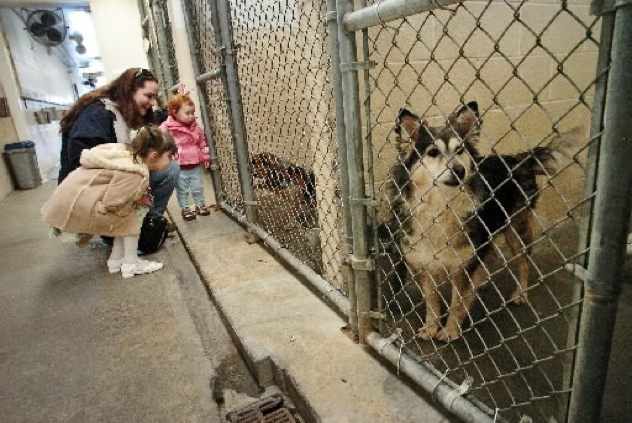
You know how at the end of every Price is Right episode, Bob Barker always said to get your pets spayed or neutered? Well, there’s a reason for that: rampant overpopulation. Each year in the United States alone, three to four million dogs are put down in shelters because they have no one to adopt them.
Spaying or neutering pets may sound cruel, but it helps to keep the number of them limited to the number of households that are actually willing to accommodate them. Dog breeders, of course, exist specifically to breed more dogs. As innocent as the concept sounds, the problem is that when the market for dogs is being filled by professional breeders, the shelters trying to rescue animals get pushed further to the margins. If purebred dogs weren’t so readily available, then people looking for pets would have no choice but to adopt them from a shelter (which, it should be noted, would also be less crowded in the first place).
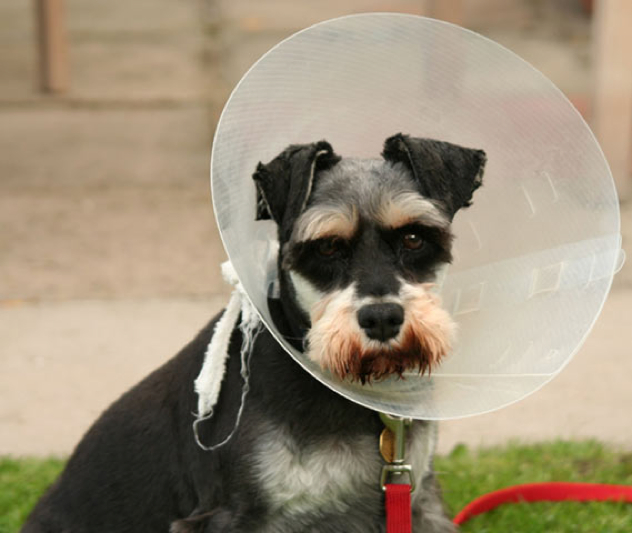
The American Kennel Club (AKC), a pedigree registry in the United States, is also in charge of putting on the Westminster Kennel Club Dog Show that you can see every year on TV. Now, there’s nothing wrong with being proud of your dog and wanting to show him or her off to the world—that’s downright adorable. The problem is that when it comes to shows like this, being proud of your dog is not what it’s all about.
According to the AKC website itself: “Spayed or neutered dogs are not eligible to compete in conformation classes at a dog show, because the purpose of a dog show is to evaluate breeding stock.” Now, putting aside how cold and clinical that description sounds, the issue is that this policy encourages overbreeding. “Keep making puppies until you find one that’s perfect,” is basically what the message is—and it adds to the rampant overpopulation discussed in the last entry.
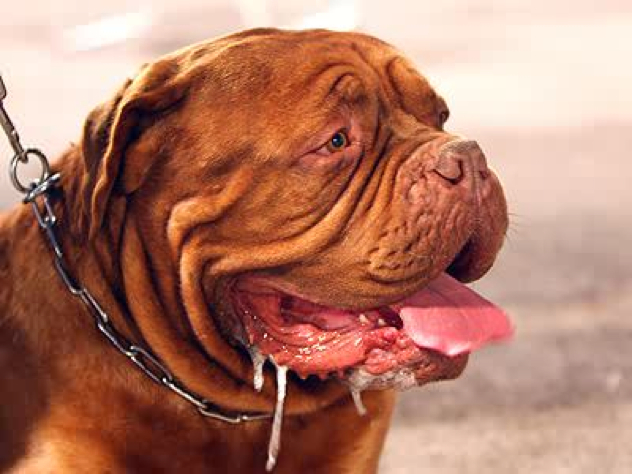
The act of incest is actually illegal in many parts of the world, and punished severely (with up to a life sentence in prison, depending on where you are). This can include consensual sex not resulting in a pregnancy—despite pregnancy being the justification behind prohibiting incest in the first place. So incest is certainly taken rather seriously when it comes to human beings, because it can lead to things like Joffrey Baratheon.
When it comes to dogs, however, inbreeding is actually encouraged. It’s easy to mate two dogs with good DNA when they share most of it. And while this might give the offspring a desired trait (at least in appearance), it also increases the chances of giving the offspring an easily avoidable genetic defect. For example, deafness is common in Dalmatians, and heart disease is a big problem for Boxers.
The problem of inbreeding is widespread, thanks to pedigree registries (like the AKC) that limit registration to small populations of “purebred” dogs. And they are indeed pure; a recent study showed that a population of twenty thousand Boxers had the genetic variance of a population of seventy.
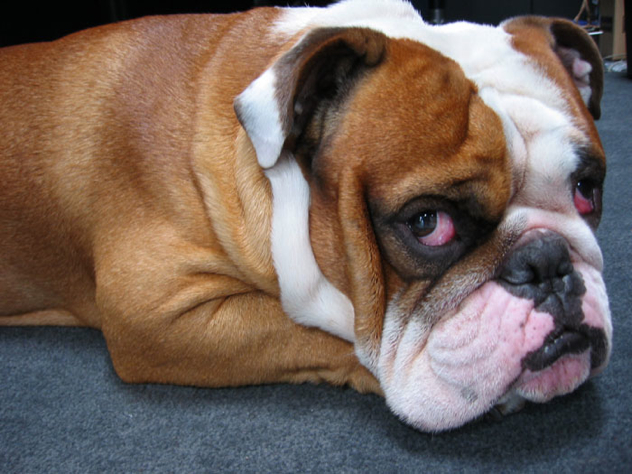
As I mentioned, there’s nothing inherently evil about the practice of selective breeding. It may be unnatural, by definition, but if done properly it could be a quick way to propagate the best and healthiest traits possible throughout the breed. The problem is that when it comes to purebred dogs, the list of desired traits is determined fairly arbitrarily.
Take a look at the English Bulldog, for example. The “official standard” (as judged and determined by Kennel Clubs) is that they have “massive, short-faced heads” with “broad and square” skulls. This description produces the squashed-looking faces commonly (but not always) seen in bulldogs—and surprisingly enough, faces like that don’t exactly lead to very healthy dogs.
Such selective, appearance-oriented breeding has led to a plethora of problems for bulldogs—even the “perfect” ones—including cancer, respiratory diseases, blindness, and heart problems. They also have severe trouble giving birth, which seems like the kind of thing breeders would actively want to avoid. And that’s just one type of dog. To take another example, the bulging eyes of pugs are prone to developing a slew of horrible diseases, mostly leading to blindness—and yet they remain the official standard.
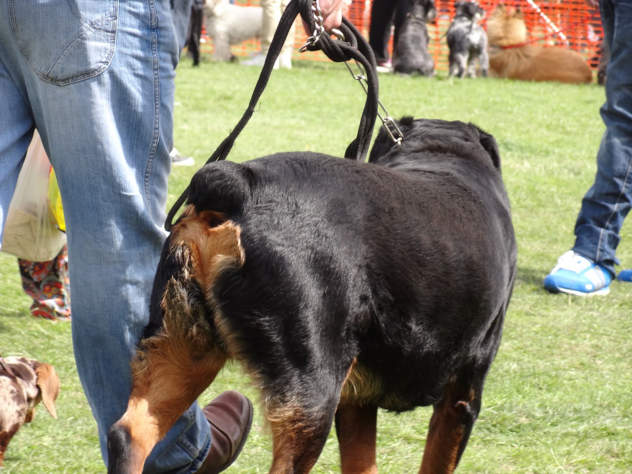
Here’s an extreme example of the prevalent focus on aesthetics in dog breeding. It seems that not all desirable traits can be passed on genetically—or at least not fast enough for some breeders. This is where surgeries like tail docking and ear cropping come in.
The practice of cutting off dogs’ tails was originally carried out to avoid paying taxes on them (because “dogs with tails” used to be a reasonable thing to impose taxes on). The practice has continued ever since, but with the new justification that it pre-emptively prevents tail injury later in life. This is quite similar to the procedure we use on human babies, which involves cutting off their feet at birth so that they don’t stub their toes as adults.
The terrible thing is that practices like tail docking and ear cropping are big parts of many breeds’ official standards. The boxer, for example, should have a “high, docked” tail, and “an undocked tail should be severely penalized.” That’s from the official website, by the way. And the story only gets worse from there: most countries have banned or at least restricted the practice of tail docking, but in the United States it’s not only common, but frequently performed without any kind of anesthesia.
All of this is done in spite of the numerous studies showing how beneficial tails are to dogs (they help with balance and social cues, for example). If it’s any consolation, the American Veterinary Medical Association opposes the practice. Or maybe that just makes things worse, because it gives untrained breeders an excuse to cut off the tails themselves.
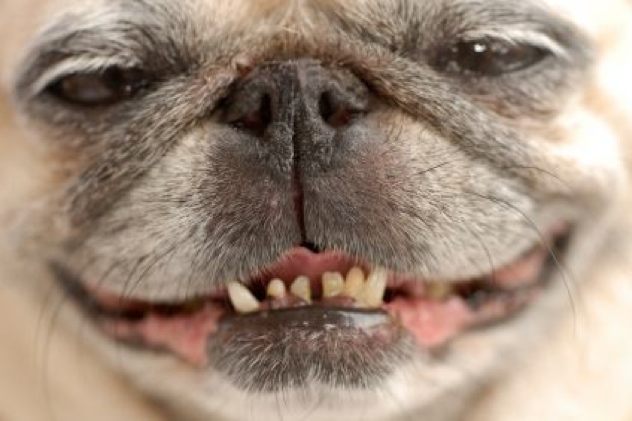
So let’s get back to those dog shows, which is the ultimate destination for dogs bred to the “official standards” of Kennel Clubs. We’ve seen that the primary focus for these standards is arbitrary, cosmetic, and often unhealthy—but what about the actual behavior of the dogs themselves? Surely how they act is just as important as how they look, right?
Well, it turns out that in dog shows, the behavior of the dogs being judged is barely taken into consideration at all. The only thing that matters, really, is that the dog doesn’t actively attack anybody, which would lead to a disqualification. Of course, this is up to the discretion of the judges, and thus dogs can be excused from the show simply for “showing their teeth” or “rolling their eyes.” The only real, useful test of a dog’s temperament is during a part of the show called “sparring,” when two dogs are placed in front of each other and are supposed to react accordingly, i.e. not at all. And this is only done with Terrier breeds, by the way—so for the rest of them, behavior isn’t all that important.
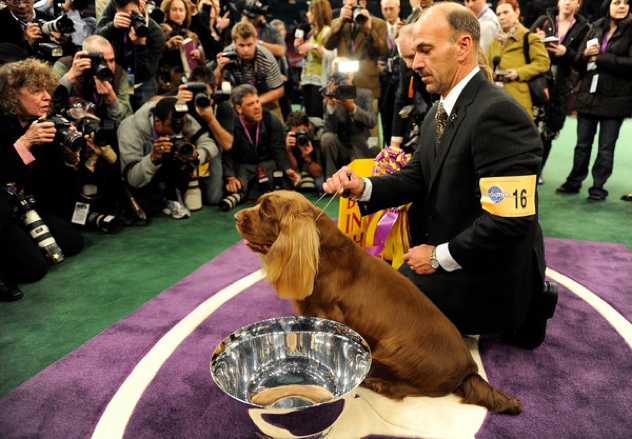
The last entry doesn’t even get to the root of the problem. The “official standards” actually specify what a breed’s temperament should be like—and this actually does make a difference when judging them. Bulldogs, for example, should be “equable and kind, resolute and courageous . . . pacific and dignified,” and this accounts for precisely three percent of their total points in show (they can accrue twice as many points by having a perfect nose).
So, once again, the dog’s personality barely matters. The worst part is that those vague, idealistic personality traits are the only things the judges are supposed to care about. Boxers, too, are supposed to be dignified, as well as “playful, patient, and stoical with children.” Pointers? Dignified and congenial. Dalmatians? Dignified. Bloodhounds? Take a guess. It’s dignified.
And that’s where the real problem starts to emerge: bloodhounds are not designed to be dignified. Not that there’s anything wrong with that, but bloodhounds are designed to hunt. Hunting a skill deemed unimportant by the official standard—nor does the Pointer need to be good at pointing, nor the fox terrier good at tracking down foxes. The historical attributes of these and every other breed are ignored in favor of arbitrary cosmetics and, apparently, the “dignity” of their bearing.
The closest the AKC gets to recognizing dogs’ original utility is by not penalizing “honorable wounds” from hunting dogs like dachshunds. Which seems okay, until you realize that they must get docked points for dishonorable wounds, whatever that means.

Here’s the deal: the AKC doesn’t at all care about their dogs’ health. Their one health requirement for registration is that a dog be up to date with its inoculations—but apart from that, the health of a given dog is irrelevant. In their own words: “AKC registration means a dog, its parents, and its ancestors are purebred. It does not indicate health or quality.”
To be sure, they’re just a registry—but they’re giving absolutely no incentive for a show breeder to take care of their dogs. In fact, the AKC almost seems actively against ensuring the quality of their breeders. They employ only nine field inspectors, who have on more than one occasion certified breeders who were jailed for animal cruelty just months later.
These overtly lax health standards have led to some kennel clubs dissociating themselves from the AKC, which of course responded by prohibiting them from showing their dogs. There’s nothing in the rules that prevents a healthy dog from competing, obviously, but to show a dog with the AKC is to support their lack of health standards. And this is awful, because there are countless professional breeders out there who care about that sort of thing, and who should be supported for doing their jobs properly.
Worst of all, this isn’t simple passivity. The Humane Society of the United States has cited more than eighty proposed bills that the AKC has publicly opposed, all of which were designed to increase the basic care standards for dog breeding. Basic in the sense of “regular feeding” and “veterinary ” Because who needs food and medicine when you have pure blood?

This is probably the most subjective entry on the list, which is why I saved it for last. All the health concerns, and the needless focus on aesthetics, are valid criticisms against breeding dogs for show—but this last one is essentially just opinion. It’s a fairly common one, though, at least among animal lovers, and it goes like this: judging the worth of an animal by its blood is wrong.
There’s a reason this thinking is frowned upon when it comes to humans: it’s awful. It’s the reasoning that led to separate drinking fountains and bans on interracial marriages. It’s akin to saying whites are better than blacks, or that brown hair and dark eyes are the inferior combination. It’s like calling someone a Mudblood—you just don’t do it unless you’re a terrible person. And yet we have mutts and mongrels, and countless Kennel Clubs keeping track of which dogs are better than them.
To be clear, I’m not trying to be dramatic or oversensitive; I know this isn’t on the same level as human racism. I’m simply pointing out the elitist line of thought that exists in the world of professional dog breeding, especially when the biggest kennel club in the US cares solely about appearance.
But is it wrong to instantly disqualify a show dog for having the wrong-colored nose (as with the bulldog) or for being half an inch taller than the average (as with the whippet)?
I think so. I think that professional dog breeding—and showing, especially in the United States—could strive to be a little better. Because dogs are seriously awesome. Let’s start treating them like the best friends they’re supposed to be.
MJ Alba has two dogs on his Twitter page @MattJAlba. Follow him and he’ll tell you which one he owns legally.








